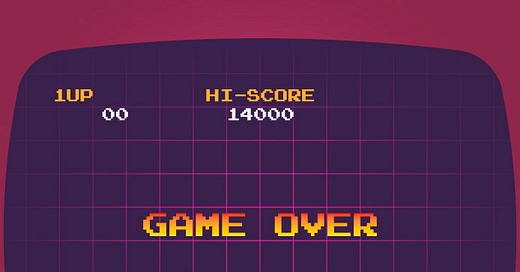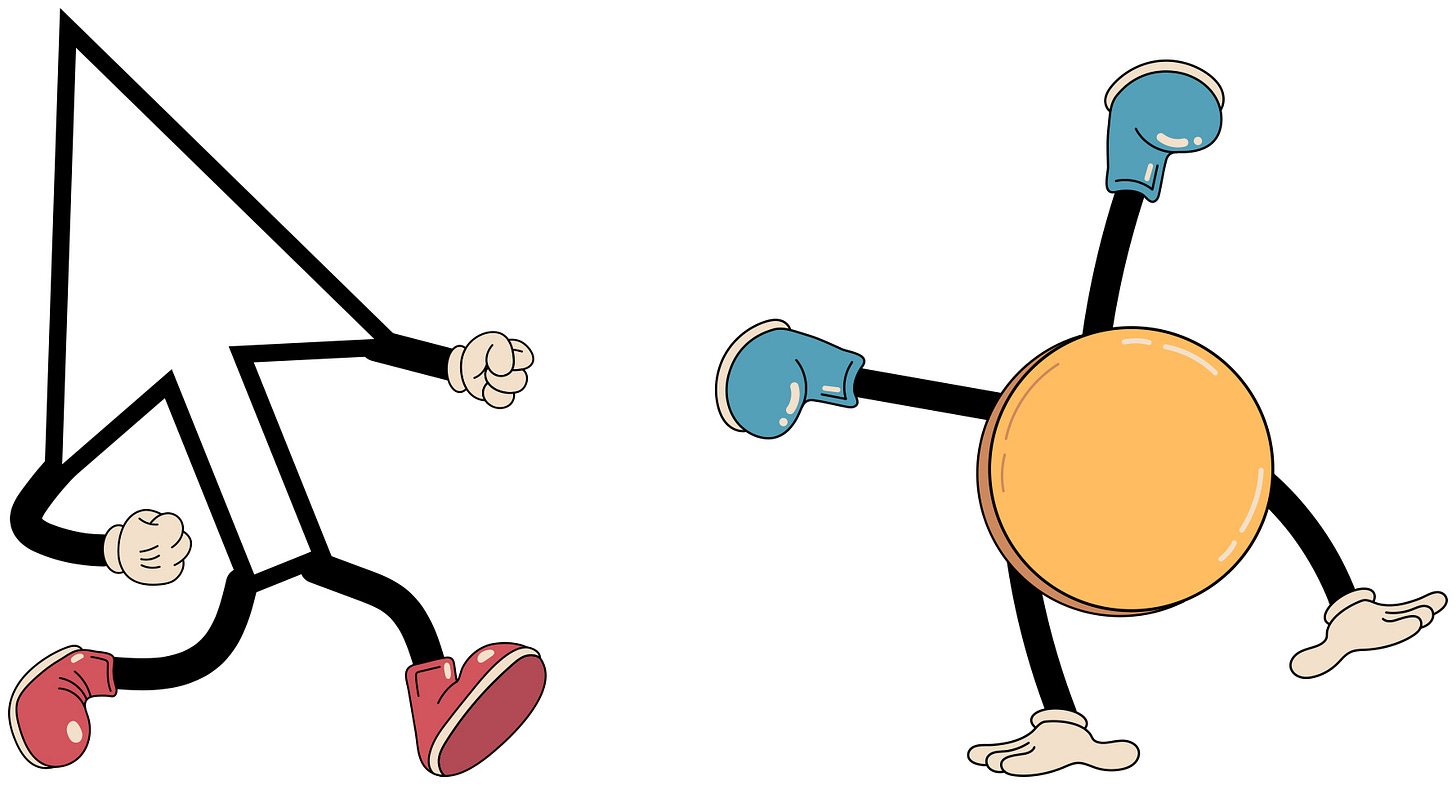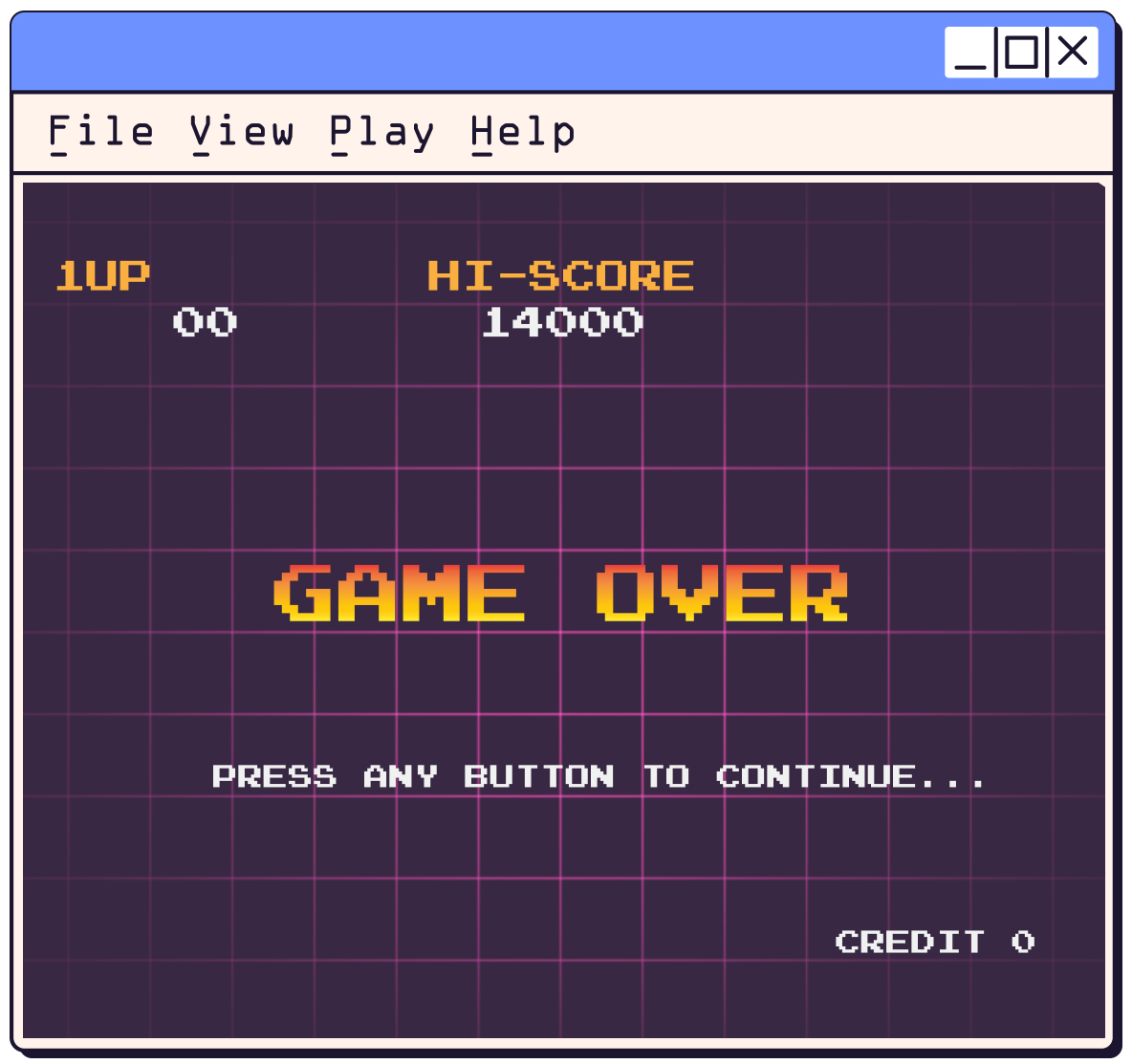Summary: This article discusses four widely adopted strategies (nudging, the aesthetic-usability effect, UI element-level animations, and gamification) and scrutinizes their potential to detract from user experience rather than enhance it.
I recently read this article from Dr. Maria Panagiotidi about how to leverage the psychological phenomenon of nudging in UX. This made me reflect on four areas where I've found that certain practices can cause more harm than good in the real world. This article is a quick list of tactics I've found in my experiences that are worth avoiding altogether. I argue that being mindful of these things will save you time and headaches in the long run, time you could use to improve the user experience in ways we know actually work.
Nudging
Nudging is a concept derived from behavioral economics and psychology that subtly influences user behavior towards more beneficial choices while preserving their freedom of choice. Nudging operates on the principle that many decisions are made unconsciously, influenced by environmental cues and automatic thought processes. Nudging is powerful because of its unique ability to guide users' actions. It does this without overtly restricting options, utilizing cognitive biases to steer behavior in a desired direction. However, it's crucial to note the word "guide" in this context; while nudging can lead users toward certain actions, it does not guarantee specific outcomes, especially when users face complex decisions.
This approach has garnered attention for its application across various domains, from public policy to UX, demonstrating its versatility and effectiveness.
Dr. Panagiotidi states in the article titled Guiding Choices in UX: The Role and Ethics of Nudging,
“There's a thin line between guiding users and manipulating them into decisions that benefit the service provider more than the user.”
I believe this to be the most important sentence in the entire piece. In my experience, nudging practices are far too often used to benefit the service provider over the user. In these most common cases, let's call nudges what they truly are: dark patterns used for nefarious purposes. Nudges are the first idea I recommend avoiding altogether because integrating them into your day-to-day practice is likely to cause more harm than good.
Aesthetic-Usability Effect
The 'aesthetic-usability effect' is a term used to describe the fact that users are more likely to perceive aesthetically pleasing designs as easier to use than less pleasing designs. It is based on the notion that if a product or interface is visually appealing, users tend to interact with it more willingly and feel more positive about their overall experience. But I'd like you to key in on the word "perceive" in this context. All this research does is prove that if an interface looks good in the eyes of the user, they might think it's slightly easier to use, but that doesn't hold any weight for users when they experience real usability difficulties.
In my June 2023 article, Lipstick On A Pig: Has UX Design Lost Its Way? I argue that this phenomenon is so often misunderstood and misused that it is worth simply ignoring. Similar to how nudging in UX can lead to practices that benefit the business over the user, prioritizing aesthetics over functionality can result in beautiful interfaces yet fail to meet user needs effectively. The reliance on visual appeal to solve usability issues overlooks the complex nature of user interaction, where ease of use, efficiency, and task completion are much more critical. This emphasis on aesthetics, at the expense of deeper usability principles, undermines the very goal of user-centered design, leading to a superficial layer of engagement that does not support the user's underlying tasks and goals. It's time to reevaluate our priorities and focus on designs that are not only visually appealing but also deeply functional and responsive to user needs.
UI Element-Level Animations
UI Element-Level Animations refer to the use of motion within user interface components to communicate status, provide feedback, guide user actions, and enhance the overall aesthetic appeal of a digital product. These animations can range from subtle transitions and micro-interactions to more complex animated sequences that draw the user's attention to certain areas of the interface or help to establish a flow within the user experience. The theory behind incorporating such animations is grounded in the belief that they can make digital environments more intuitive and engaging, mimicking the dynamics of the physical world to foster a more natural interaction between the user and the digital product. However, the line between enhancing user experience and detracting from usability is thin, necessitating a careful balance in the design and implementation of UI element-level animations.
Well-thought-out and strategic animations within user interfaces can offer positive results in specific cases. However, as highlighted in Page Laubheimer's article, Executing UX Animations: Duration and Motion Characteristics, these animations often harm usability in the real world. Despite the potential benefits, the overuse or poor implementation of UI element-level animations frequently detracts from the user experience, doing more harm than good. Animations that are too long, too elaborate, or unnecessarily complex are proven to cause frustration and delay as users wait for animations to complete before they can proceed. (Sound familiar?)
Furthermore, animations pose significant accessibility challenges. For users with epilepsy, animations involving rapid color changes or flashing lights can trigger seizures. Individuals with vestibular disorders may experience dizziness, nausea, or even migraines due to motion effects such as parallax scrolling, carousel-forwarding animations, and scroll hijacking. Exercising restraint with animations and respecting users who prefer reduced motion are crucial measures. This can be achieved either by providing an option to disable animations or by automatically detecting and adhering to the 'reduce motion' settings on users' devices. For these reasons, I argue that incorporating UI-level animations into your designs, especially for complex interactions, should be the exception rather than the rule.
Gamification
Gamification is the strategic integration of game-playing elements into non-gaming environments, aiming to increase engagement, motivation, and loyalty among users. This approach utilizes mechanisms like points, badges, leaderboards, and rewards to exploit users' natural tendencies for competition and achievement. The rationale behind gamification in UX is that it can transform mundane tasks into engaging experiences, encouraging users to engage more deeply with the product and, ideally, enhancing user satisfaction and loyalty. By gamifying elements of the user interface, UXers hope to create a more compelling and addictive user experience, drawing on the engaging power of games to capture and retain user attention.
However, numerous studies have shown that gamifying workflows often leads to user frustration, a distraction from primary objectives, and outright user manipulation. Gamification poses the risk of oversimplification, reducing complex behaviors and outcomes to simplistic metrics that may not accurately reflect the value or quality of user engagement. This can result in a misalignment between the user's goals and the product's objectives, where the pursuit of points or badges overshadows the intrinsic benefits of using the product. Similarly, the effectiveness of gamification can diminish over time as the novelty wears off, necessitating continuous innovation and updates to sustain user interest and engagement.
Lastly, gamification is mostly used to make digital platforms highly addictive, leading to outcomes that are concerning from both ethical and social perspectives. Social media platforms serve as a prime example of this. By leveraging game-like mechanics such as likes, shares, and followers, these platforms tap into users' desires for social validation and competition, compelling users to engage in an endless cycle of interaction and feedback. Extensive research has linked excessive social media use to a range of negative outcomes, including anxiety, depression, reduced attention spans, and disrupted sleep patterns. The addictive nature of these platforms, driven by gamification tactics, exploits psychological vulnerabilities, encouraging behaviors that prioritize constant engagement over well-being. The data on these outcomes paints a troubling picture of the impact of gamification when its application prioritizes platform stickiness and user retention over the health and happiness of users. This is the main reason I advocate to stay away from gamification as a practice.
Conclusion
While innovative in theory and occasionally effective in practice, these four strategies carry significant risks of misuse, leading to user frustration, manipulation, and a departure from genuine usability principles. The allure of engaging users through psychological tactics or aesthetic enhancements must be weighed against the ethical responsibility that prioritizes user well-being, accessibility, and meaningful interaction. As UX leaders, it becomes increasingly clear that our focus should lie on simplicity, transparency, and a steadfast commitment to user-centered principles. By critically evaluating the long-term implications of our day-to-day choices, we can avoid the pitfalls of superficial engagement strategies and return to what we should be doing: creating great UX.
Do you agree, disagree, or use any of these tactics regularly without the negative ramifications discussed here? If so, I'd love to hear from you. Comment or DM me with the details. I'd love to learn more.








